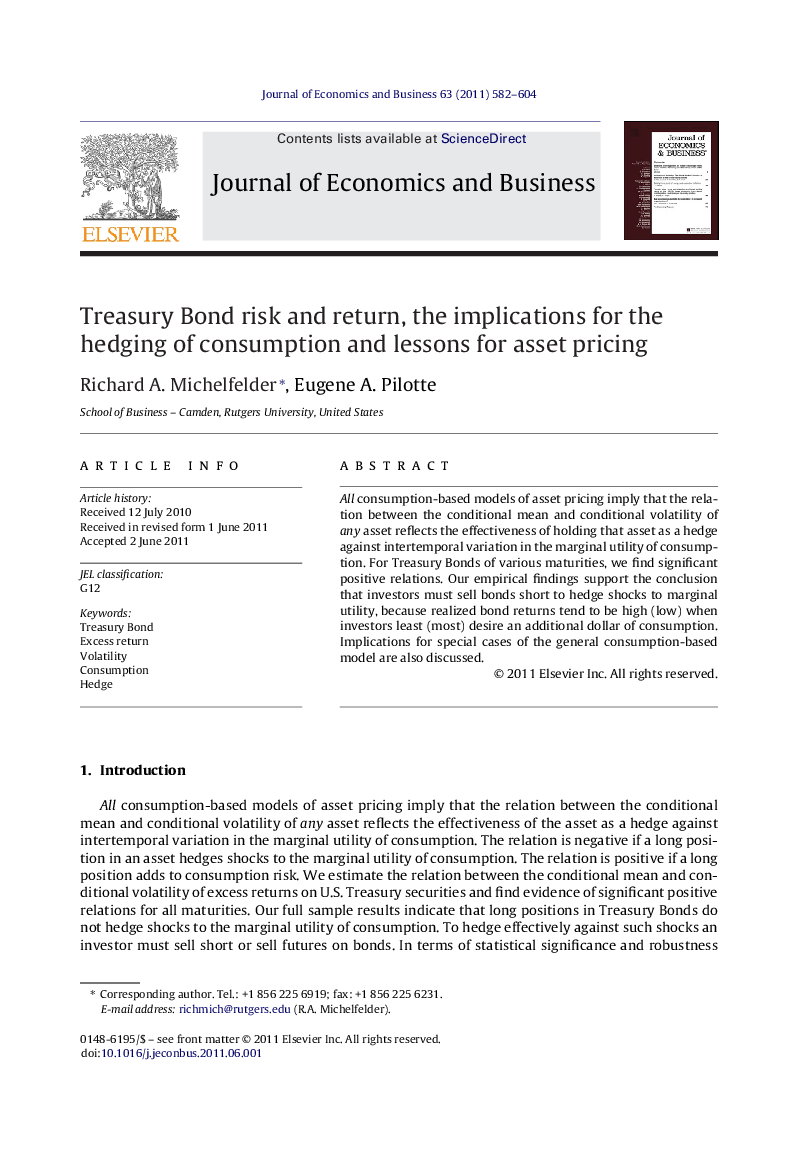| Article ID | Journal | Published Year | Pages | File Type |
|---|---|---|---|---|
| 958024 | Journal of Economics and Business | 2011 | 23 Pages |
Abstract
All consumption-based models of asset pricing imply that the relation between the conditional mean and conditional volatility of any asset reflects the effectiveness of holding that asset as a hedge against intertemporal variation in the marginal utility of consumption. For Treasury Bonds of various maturities, we find significant positive relations. Our empirical findings support the conclusion that investors must sell bonds short to hedge shocks to marginal utility, because realized bond returns tend to be high (low) when investors least (most) desire an additional dollar of consumption. Implications for special cases of the general consumption-based model are also discussed.
Related Topics
Social Sciences and Humanities
Business, Management and Accounting
Strategy and Management
Authors
Richard A. Michelfelder, Eugene A. Pilotte,
